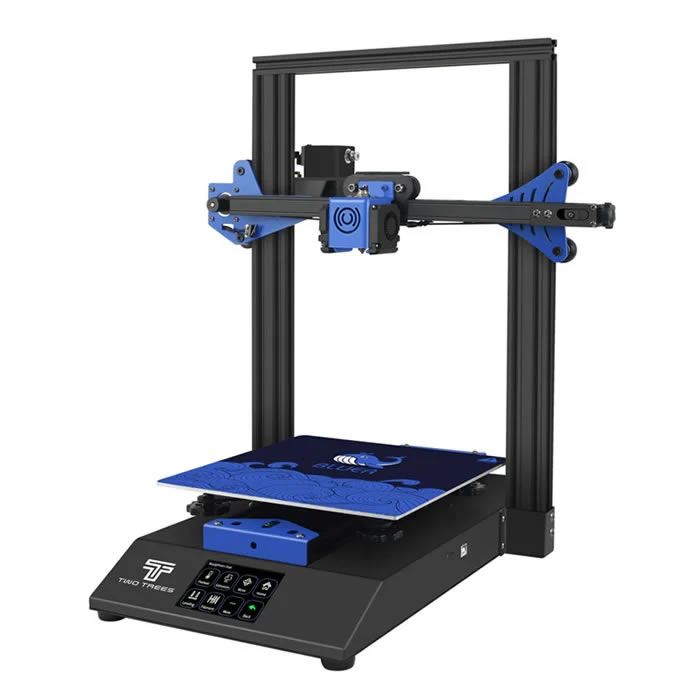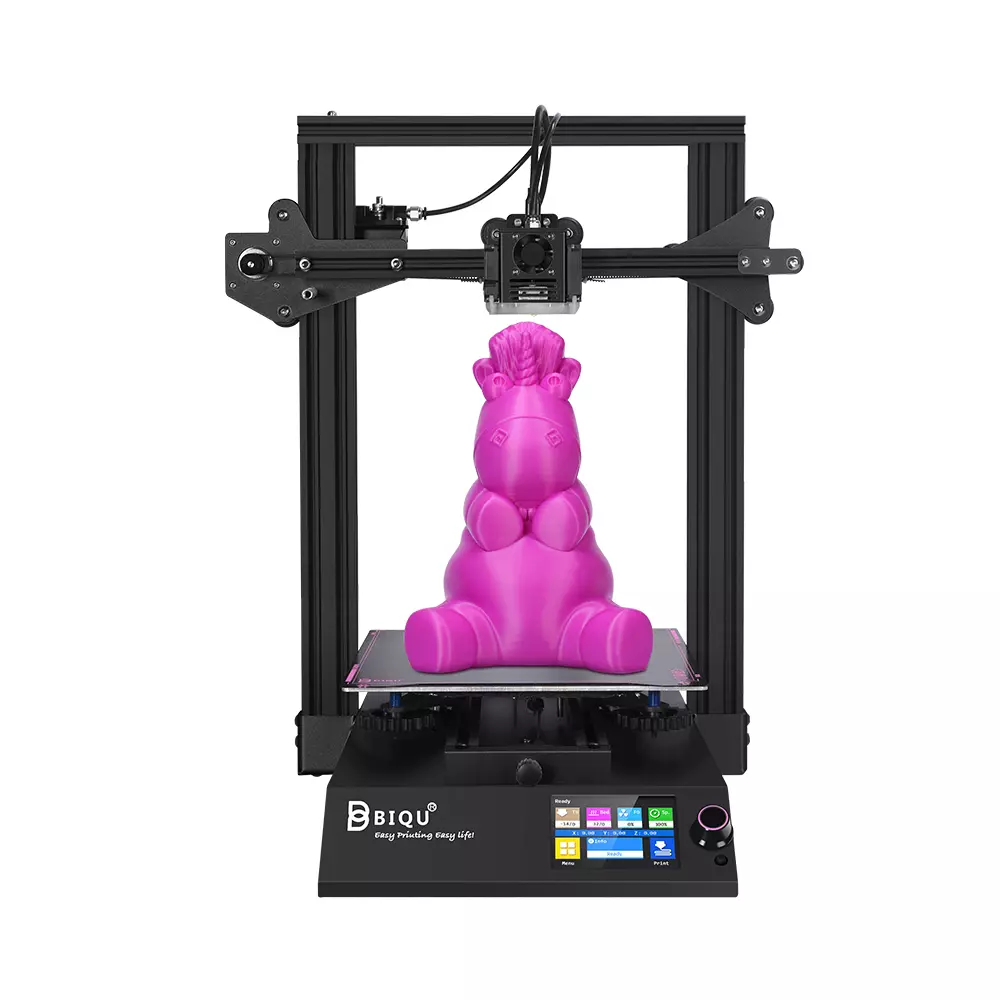Compare Bluer vs BIQU B1
Comparison between the best 3D printers
Choose the best 3D printer at the best price. The cheapest 3D printers are here.
Buy a 3D printer here with 3D Fila.
 |
 |
|
| Model | Bluer |
BIQU B1 |
| Printing Material | Filament | Filament |
| Buy Filament for TwoTrees Bluer | Buy Filament forBigTreeTech BIQU B1 | |
| Estimated price | $169,00 | $269,00 |
| Manufacturer | TwoTrees | BigTreeTech |
| Release Year | 2019 | 2020 |
| Print Volume [mm] | 230x230x280 | 235x235x270 |
| Printer Size [mm] | 400x410x520 | 412x402x492 |
| Weight [kg] | 8 | 8,00 |
| Power Loss Recovery | YES | YES |
| Enclosed printer | NO | NO |
| Bed Leveling | Manual | Manual |
| Filament End Sensor | YES | YES |
| Bed type | Heated | Heated |
| Power supply system | Bowden | Bowden |
| Standard nozzle | 0,4 | 0,4 |
| Maximum Nozzle Temperature [°C] | 260 | 250 |
| Maximum Bed Temperature [°C] | 100 | 100 |
| Maximum printing speed [mm/s] | 200 | 100 |
| Filament holder | YES | YES |
| Camera for supervision | NO | NO |
| Recommended filaments | PLA, PETG | PLA, TPU, ABS, PETG |
| Recommended slicers | Cura, Simplify, Slic3r | Cura, Simplify, Slic3r |
| Maximum Resolution [mm] | 0,1 | 0,1 |
| Processor | MKS Robin Nano V1.2 + TMC2208 | 32 Bits BTT SKR V 1.4 |
| Display | Touchscreen TFT 3,5'' | Touchscreen TFT 3,5'' |
| Power Supply | 240W | 24V / 360W |
| Connectivity | SD / USB | SD / USB |
| Operating systems | Windows, Mac, Linux | Windows, Mac, Linux |
| Date of registration in the system | 2021-09-20 | 2021-04-14 |
| Release date | 2019 | 2020 |
| Extra features | The Bluer offers interesting features such as automatic bed leveling, a 3.5-inch color touchscreen for easy operation, and a filament sensor to prevent print failures. It has a robust metal extruder and a generous 230 x 230 x 280 mm print volume, suitable for a variety of projects. The community mentions improvements made by Two Trees based on feedback, increasing its reliability. | The BIQU B1 is an advanced 3D printer with a silent 32-bit BTT SKR V1.4 motherboard and ARM Cortex-M3 CPU, offering DIY interfaces (I2C, SPI, WiFi) and dual Z-axis. Its dual BTT B1 TFT35 V3.0 operating system allows real-time monitoring and multiple printing modes, including G-code visualization effects. It stands out for its BIQU SSS (Super Spring Steel), ensuring easy model adhesion and simplified removal, with the possibility of using it on both sides. It includes a filament sensor, automatically pausing printing in case of filament breakage. The multicolored RGB lights integrated into the hotend allow you to view the printing status even at night. Additional notes include the need for a BIQU-specific Type-C cable and extra interfaces for smart filament sensor and BL Touch. |
| Support for multiple colors and materials (AMS and CFS) | NO | NO |
Notes * |
||
| Cost-benefit | 7 / 10 | 7 / 10 |
| Hardware | 2 / 10 | 2 / 10 |
| Tela | . | . |
| Print volume | 3 / 10 | 3 / 10 |
| Performance | 2 / 10 | 1 / 10 |
Conclusion |
| In comparing the TwoTrees Bluer and the BIQU B1 3D printers, several key factors stand out that will aid in making an informed purchasing decision, especially when considering cost efficiency and features. The TwoTrees Bluer emerges as a more budget-friendly option, offering a good balance of features and performance at a lower price point. Its print volume of 230 x 230 x 280 mm is slightly smaller than the BIQU B1's but is still suitable for a variety of projects. The inclusion of a filament sensor and a robust extruder enhances its reliability, making it a solid choice for hobbyists and those new to 3D printing. On the other hand, the BIQU B1, while priced higher, provides advanced features that cater to more experienced users. Its silent 32-bit motherboard ensures smoother operations, and the dual Z-axis setup adds stability during printing. The BIQU B1's capabilities, including real-time monitoring and enhanced adhesion with its special print surface, make it appealing for more complex projects and professionals who require precision and reliability. In terms of additional features, both printers offer manual bed leveling and heated beds, but the BIQU B1's dual operation modes and advanced software support may offer more versatility for users willing to invest in something more robust. Ultimately, if budget is a top priority and basic 3D printing needs are the focus, the TwoTrees Bluer is a commendable choice. Conversely, for those looking for advanced capabilities and willing to invest more, the BIQU B1 provides enhanced features that justify its higher price point. Overall, the decision rests on individual needs; for casual users, the Bluer is the best value, while more serious users may find the BIQU B1 worth the extra investment. |

